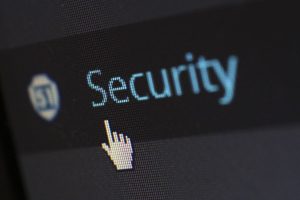How To Maintain Productivity Without Compromising Your Cybersecurity

However, there is a potentially conflicting interest with cybersecurity – and that is productivity. It is often believed by business owners that they can’t improve one without compromising the other. For example, putting in place multi-factor authentication on log-ins certainly makes a company more secure, but it is also likely to be less time efficient and create scenarios where genuine log-in attempts fail and have to be resolved.
For those companies that have chosen to invest in their cybersecurity, it is important to establish ways that productivity can be maintained, and even improved, without making this investment a wasted effort and financial decision.
Here, we take a look at how your business can achieve higher levels of productivity without compromising your cybersecurity.
Invest in the right security technologies
The first thing to note is that the type of cybersecurity technologies you invest in can play a big role in how it affects your business productivity. For example, some cybersecurity strategies place a focus on reacting to attacks – and while this is an important facet of security, it can also affect productivity tremendously.
It can be a much better idea to invest in technologies such as managed detection and response. This is software that operates in the background as data is ‘collected from across your networks, endpoints, and cloud environments, analyzed using the latest machine learning and behavioral detection engines, then enriched with the latest threat intelligence’.
From this data the software understands what is normal, and can therefore recognise and react to abnormal behavior. This can then be investigated. This is far more effective than waiting for an attack to happen and then having to uproot the businesses in order to find and deal with the problem.
Find compromises
There can be a real temptation to maintain productivity and even improve on it by taking a lax approach to cybersecurity policies. This concept here is that reducing the strenuousness of cybersecurity provides employees with more space to breathe. There can be logic here, but it is important to ensure that you are relaxing measures in the right areas.
It is important to consult with your business’ cybersecurity specialists as well as those who manage data and data security across the organization. Working with these members of staff can allow you to establish where your company is potentially vulnerable and find ways to ensure that any changes you make do not negatively affect you from this perspective.
Be aware of insider threats
Many businesses assume that insider threats necessarily come from malicious actors – for example, disgruntled former employees. However, this is not always the case. In fact the vast majority of cybercrime that involves an ‘insider’ element actually relates to mistakes that have been made by employees.
The key thing to note here is that if employees do not understand why they need to follow a particular cybersecurity policy, or if they feel that it stops them from doing their job effectively, they may simply disregard it. It is essential, then, that businesses ensure that cybersecurity policies are adhered to and training is provided to help employees understand why they have to take it seriously.
Employees often want to find the most time effective ways to carry out a task in order to strive for higher productivity levels. But this comes at too high a cost if the company as a whole is put at risk of a data breach.
There does not need to be an inherent contradiction between productivity and cybersecurity. In fact, as both are becoming vital to businesses, leaders of organizations need to find a way to ensure that both are prioritized. The most important step is to ensure that staff understand the importance of cybersecurity and the procedures that have to be put in place. This allows them to establish ways to be more productive in spite of cybersecurity measures.













Leave a Reply
Want to join the discussion?Feel free to contribute!